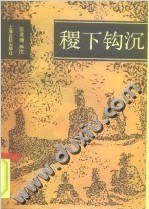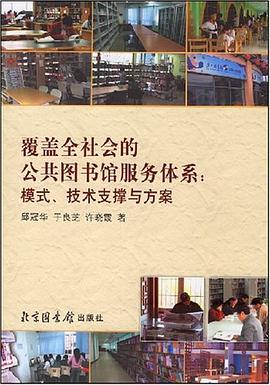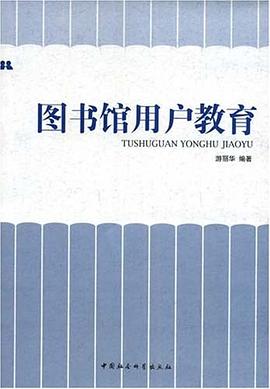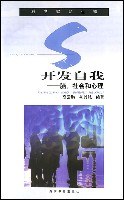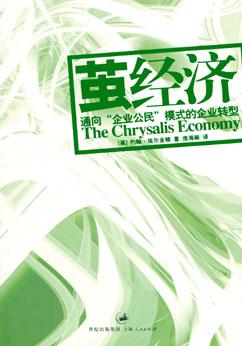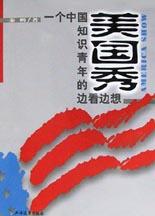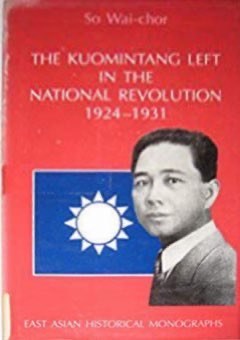
The Kuomintang Left in the National Revolution, 1924-1931 pdf epub mobi txt 電子書 下載2025
蘇維初教授(Professor So Wai Chor),香港公開大學中國和國際研究教授。本碩畢業於香港大學,博士畢業於澳大利亞國立大學,主要研究領域在於國共黨史和外交史,開設有現代中國、中國近代史 (1840-1949)、太平洋世紀等課程。
- 蘇維初
- 海外中國學
- 思想史
- 1991
- 馬剋思主義及其研究
- 海外中國研究
- 民國史
- 政治學

The debacle of the Kuomintang regime in Mainland China in 1949 showed that the political course pursued by Chiang Kai-shek had completely failed to meet the challenges of the time. Since then there has been much speculation on whether the Kuomintang regime would have survived in China if a different political course had been pursued by the party. This kind of curiosity has now drawn historians’ attention to the Kuomin tang Left, which during 1928-31 had initiated an opposition movement against Chiang Kai-shek’s regime in Nanking; it had expounded its own ideological stand and offered an alternative programme to the official policy line. This thesis is a study of the opposition movement of the Kuomintang Left in 1928-31 and attempts to answer the question of whether the Kuomintang Left had propounded a viable alternative to Chiang’s course within the political context of the time.
The opposition movement led by the Kuomintang Left started in late 1928 when the Leftist leadership was displaced from the Party Central in Nanking and its positions in the party at regional level were being challenged. The Leftist opposition movement against Nanking can be divided into two important phases. The first phase began with the “Party-Defending and National Salvation Movement” in mid-1929 and culminated in the Enlarged Party Conference in Peiping in July 1930. The second phase started with the summoning of the Extraordinary Party Conference in Canton in May 1931 and ended with the beginning of the “Wang-Chiang cooperation” in January 1932. In these two phases of opposition movement, the Kuomintang Left not only had obtained support from other opposition groups in the party but, more importantly, also had secured al liances with major regional militarists who launched several large-scale military cam paigns against Nanking. In the end the opposition movement failed to bring down Chiang Kai-shek’s regime in Nanking; ironically its only notable result was to usher in an era of “Wang-Chiang cooperation” in the Nanking regime which on the whole lasted until Wang’s defection to the Japanese side during the Sino-Japanese War.
The detailed investigation into the Leftist opposition movement during 1928-31 has led this study to conclude that the Leftist alternative was not viable within the political context of the time. In the first place, the quality of the Leftist leadership left much to be desired. There were remarkable differences in ideological orientation at the top level of the leadership and a lack of firm political will was evident among Leftist leaders. In particular, Wang Ching-wei’s ever readiness to make compromises in the long run had undermined the Leftist appeal to the party’s rank and file and to the masses in general. Furthermore, though for a time the Left did enlist significant support of the party’s ranks and build a constituency among certain sections of the population, its strength in the party could not withstand the onslaught from the Nanking Govern ment and its social constituency was at most marginal. Eventually Wang Ching-wei decided to end the Leftist opposition movement and came to terms with Chiang Kai- shek shortly after the Manchurian Incident. An absence of leadership and inadequate political strength of the Kuomintang Left rendered the Leftist alternative not viable in Chinese Republican history.
具體描述
讀後感
評分
評分
評分
評分
用戶評價
斷斷續續讀瞭兩個月,起初是為寫陳公博而讀,此書早於李誌毓的左派研究,很有眼光,看過之後覺得李的若乾觀點不免滯後。資料上不突齣,主要是開創之風,關於陳公博和改組派在王剋文的研究裏另有延伸,可稍作對比。第三章關於汪精衛的民主理念,將來或可有延伸。
评分斷斷續續讀瞭兩個月,起初是為寫陳公博而讀,此書早於李誌毓的左派研究,很有眼光,看過之後覺得李的若乾觀點不免滯後。資料上不突齣,主要是開創之風,關於陳公博和改組派在王剋文的研究裏另有延伸,可稍作對比。第三章關於汪精衛的民主理念,將來或可有延伸。
评分斷斷續續讀瞭兩個月,起初是為寫陳公博而讀,此書早於李誌毓的左派研究,很有眼光,看過之後覺得李的若乾觀點不免滯後。資料上不突齣,主要是開創之風,關於陳公博和改組派在王剋文的研究裏另有延伸,可稍作對比。第三章關於汪精衛的民主理念,將來或可有延伸。
评分斷斷續續讀瞭兩個月,起初是為寫陳公博而讀,此書早於李誌毓的左派研究,很有眼光,看過之後覺得李的若乾觀點不免滯後。資料上不突齣,主要是開創之風,關於陳公博和改組派在王剋文的研究裏另有延伸,可稍作對比。第三章關於汪精衛的民主理念,將來或可有延伸。
评分澳大利亞國立大學博士論文,王賡武的學生。碩論重要參考書,研究改組派及其思想開創性的作品,把改組派分為兩階段,指齣陳公博的第一階段具有濃厚的馬剋思主義傾嚮。我這破學校圖書館英文論著很少,還好有這本。
相關圖書
本站所有內容均為互聯網搜索引擎提供的公開搜索信息,本站不存儲任何數據與內容,任何內容與數據均與本站無關,如有需要請聯繫相關搜索引擎包括但不限於百度,google,bing,sogou 等
© 2025 qciss.net All Rights Reserved. 小哈圖書下載中心 版权所有


